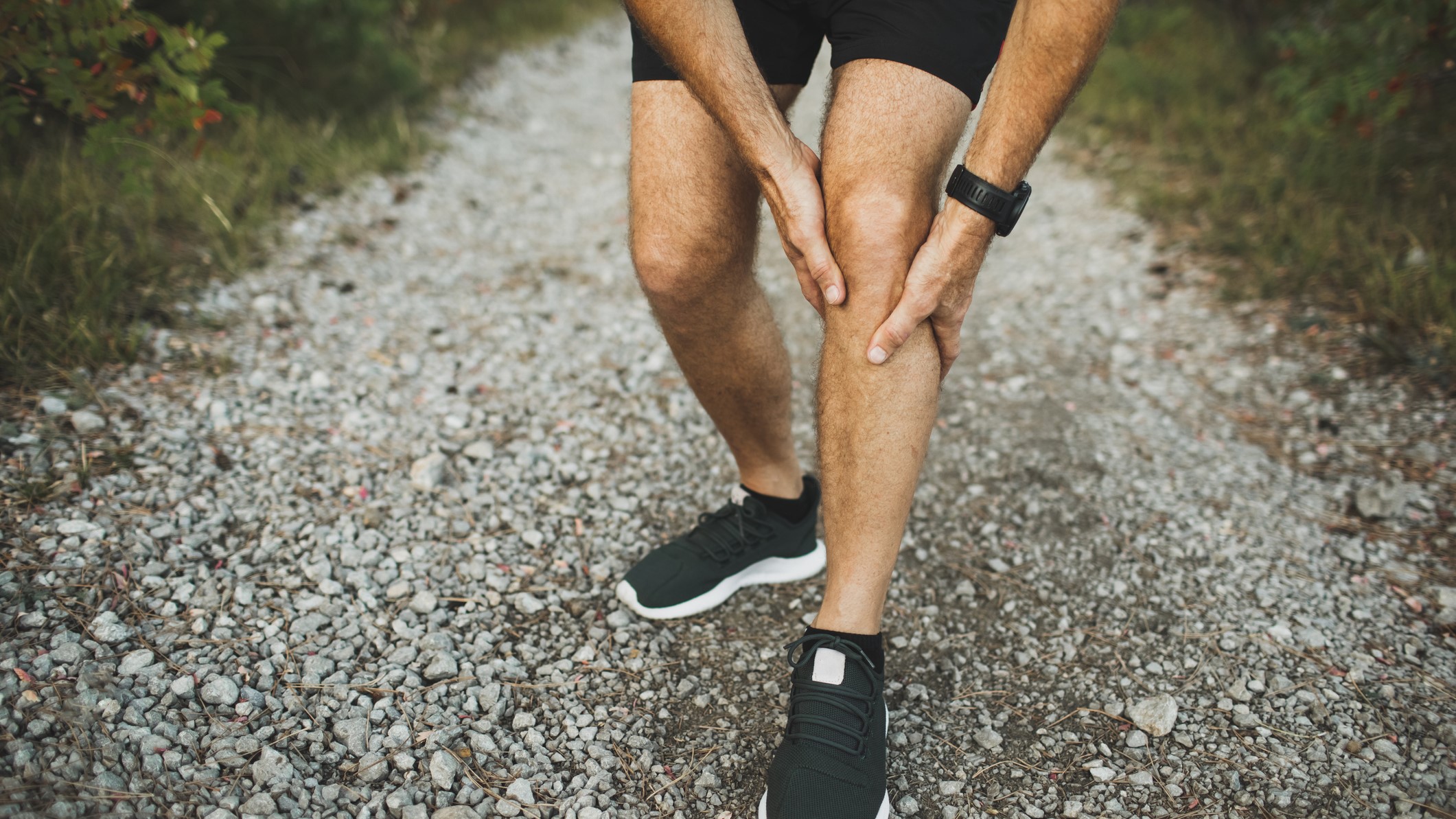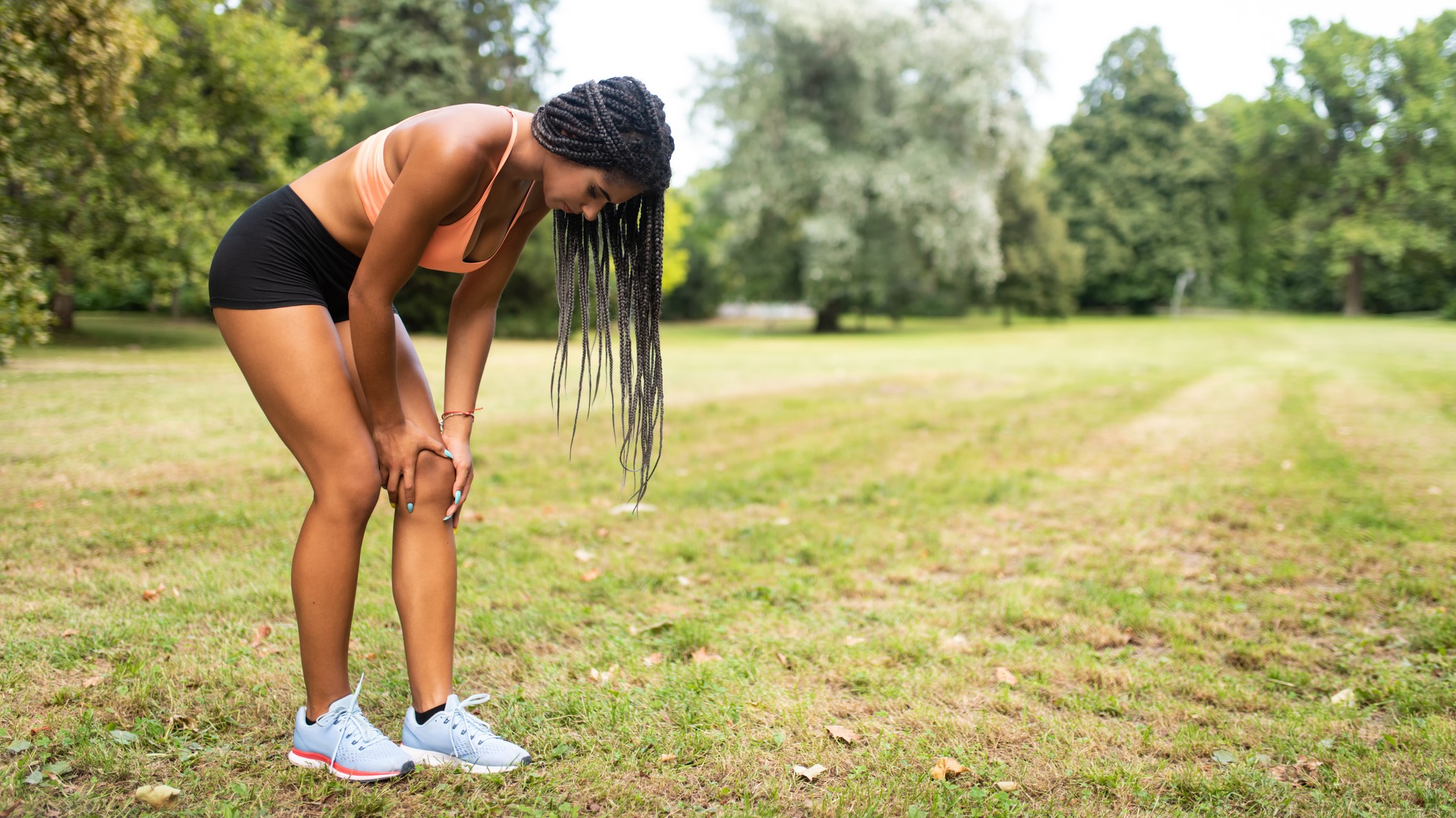Four reasons why you might get knee pain when running
If you are a runner, you will probably feel knee pain at one time or another. Here’s what you need to know and what you should do when injury strikes

At some point, every runner has been told running is bad for your knees. Not true — running helps to keep the knees lubricated and studies have shown that runners are less likely to develop osteoarthritis of the knees than people who don’t run. Running also helps to maintain healthy knee cartilage, and because runners tend to weigh less than non-runners, they place less stress on their knee joints in daily life.
That said, many runners will pick up a knee injury somewhere along the line. They are caused by overuse, bad running form, muscle weakness or tightness, or simple wear and tear. Here, we look at some of the most common knee problems in runners, what causes them, how to treat them, and how to prevent them.
Runner’s Knee
What is it?
This is the most common overuse injury among runners (so common they put it in the name!). The technical term is patellofemoral pain syndrome, which, admittedly, sounds more impressive. It usually manifests as a dull pain under your kneecap. It is often worse after you have been sitting for a while with your knees bent, and it may also be more painful when you walk up or down stairs. You may notice a clicking or grinding sound when you bend your knee. Runner's knee affects women far more than men.
What causes it?
Irritation of the tissue around the kneecap. This can develop if you have recently increased your distance or speed, or it can be a result of weak or tight thigh and hip muscles. If they cannot do their job properly, your knee may shift out of alignment, which is when the problem starts. In some cases, runner’s knee can be caused by a problem with your iliotibial band (ITB), of which more later.
How do I treat it?
Sign up to get the BEST of Tom's Guide direct to your inbox.
Get instant access to breaking news, the hottest reviews, great deals and helpful tips.
- Rest is a good place to start. This will allow the swelling to come down
- Ice the area daily to further reduce inflammation
- Take an over-the-counter anti-inflammatory. Use as directed on the label.
- Cross-training: for example, swimming, so you maintain fitness but give the injury time to heal
- A physiotherapist can recommend exercises to strengthen the muscles and tendons that keep the knee properly aligned
How long does it take to heal?
Healing time varies, but four to six weeks is a good guideline.
Can I prevent it?
Strengthening and stretching exercises (hip flexors, quads, hamstrings) will help protect the knee and surrounding area. Also, don’t increase your weekly distance by too much (aim for about 10%) and run on softer surfaces when you can. Some people find that shortening their running stride helps. Others swear by foam-rolling (and some swear during foam-rolling). Whatever works for you.
Iliotibial Band Syndrome (ITBS)
What is it?
This affects about 12% of runners and though it is usually seen as an overuse injury, the exact cause is not well understood. It is normally felt as pain on the outside of the knee and it may lead to hip pain. It develops when the Iliotibial (IT) band, a tough strip of tissue that runs from your outer hip to the top of the shin and crosses the knee joint, becomes tight, causing friction and compression that lead to pain. This band is made of fascia – elastic connective tissue – and is the biggest of its kind in the body. It has long been believed that the role of the IT band is to stabilize the hip and knee while we walk, but recent research suggests it may also act as a powerful spring to help us run. You have to appreciate the irony.
What causes it?
Increasing your mileage is often a factor, and new runners are prone to the condition, too. Wearing worn-down shoes does not help and if you overpronate (your foot rolls in each time it lands), you are more likely to develop ITBS. Running on a slanted surface may also be a contributing element.
How do I treat it?
- Again, rest is your friend
- Cross-train in a way that does not worsen the injury
- Icing the area a few times a day, for 15 minutes at a time, may ease inflammation
- Try ibuprofen or another anti-inflammatory
- Stretching the IT band and surrounding muscles
- Foam-rolling the outside of your thigh. Do not equate pain with effectiveness. If the IT band is extremely tight, foam-rolling may not be the way to go. Be guided by your body. This goes for all injuries
- Targeted massage
- Have a gait analysis to ensure you are wearing the right running shoes
How long does it take to heal?
A multifaceted approach has been shown to be successful. You should be able to recover from ITBS within six weeks. If not, see your doctor or a physiotherapist who specializes in sports injuries.
Can I prevent it?
Strengthening and stretching (IT band, quads, hamstrings, and the often-neglected hip abductors –gluteus medius, gluteus minimus, and tensor fascia latae) can help. Foam-rolling your IT band can help to loosen it. And don’t up your mileage before your body is ready for it. Make sure you are wearing the right shoes for your gait and foot shape. (If you are looking to upgrade your shoes, we've found the best running shoes, the best Nike running shoes, and the best women's running shoes here).

Patellar tendinitis
What is it?
Inflammation of the tendon that connects your knee to your shinbone. It is common among runners, although it is also called "jumper’s knee," as it often affects those who play sports such as basketball and volleyball. The pain is usually felt just below your kneecap.
What causes it?
It develops when there is repeated stress to the tendon, which causes tiny tears. These weaken the tendon, leading to inflammation. It’s an overuse injury. It takes time for the body to adapt — your cardio system tends to get stronger before your muscles and bones — and if you do not give it that time, you will likely pick up an injury.
How do I treat it?
- Rest until you can run pain-free: ease back into your training
- Ice the affected area daily
- Stretch and strengthen your leg and hip muscles
- Anti-inflammatories
- If symptoms persist, see a doctor or a physiotherapist
Can I prevent it?
Add stretches to your routine, such as seated hamstring stretches, kneeling hip flexor stretches and quad stretches. Strengthen your legs with exercises such as squats — here's how to do a resistance band squat, plus the variations to try.
Osteoarthritis
What is it?
Rather than a normal injury, osteoarthritis is a condition that causes stiffness, swelling, and pain in joints. The pain ranges from mild to severe. It develops when cartilage, which cushions the ends of bones, wear away and bone rubs on bone. It is the most common form of arthritis, affecting 32.5 million adults in the US. Almost any joint can be affected but the knees are a common problem area.
What causes it?
There are several risk factors, including a previous injury, excess stress on joints, genetics, gender (women are more susceptible after the age of 50), age, and being overweight. The exact cause remains unknown.
How do I treat it?
There is no cure. However, research has shown that running and other exercise help to minimise the damage caused by osteoarthritis. Other steps include:
- Muscle strengthening to support the affected joint
- Managing weight loss (so, running)
- Eating a healthy diet, which will also help maintain a healthy weight
- Over-the-counter pain relief
- Medication prescribed by a doctor, such as steroids
How do I prevent it?
Maintain a healthy weight, eat well, stay active and take care of your joints.
This is not an exhaustive list of running knee injuries. If you have an injury that shows no sign of improvement with rest and self-treatment, make an appointment with a healthcare provider.
Looking for more running advice? We've found the best running apps and the best running watches on the market here, as well as the best running phone holders for carrying your tech with you as you run. We've also found a beginner's running plan, that'll get you from not running to 30-minutes of continuous running in six weeks, and we've taken a look at what 30 minutes of running does to your body.
John is a writer and editor based in London. He was worked for magazines such as Runner’s World, Men’s Health, Women’s Health and Cosmopolitan. A keen runner, what he lacks in ability he makes up for with enthusiasm and excuses.

